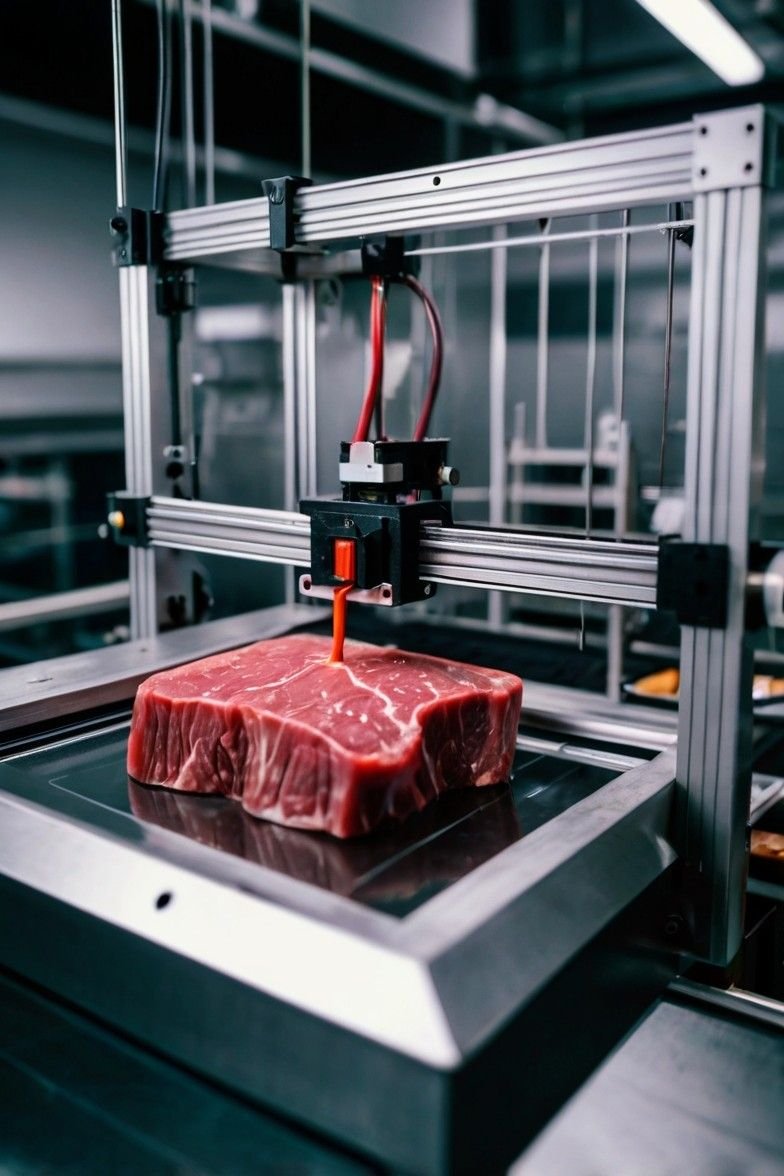AI-Generated Image. The Inevitable Rise Of Vertical Farming by Tech Is The Culture
What Is Vertical Farming?
Vertical farming is an innovative agricultural practice. It involves cultivating crops in vertically stacked layers, often incorporating various controlled-environment agriculture (CEA) practices. This method utilizes food tech such as hydroponics and aeroponics, providing an efficient means of growing food in urban environments where space is limited. In essence, vertical farming transforms traditional farming paradigms by making it feasible to produce food in high-density areas, thereby addressing space constraints often faced in densely populated cities.
The significance of vertical farming goes beyond its spatial efficiency; it also plays a crucial role in promoting sustainability in agriculture. By utilizing advanced systems, such as soil-less growing techniques, these farms can dramatically reduce the land and water required for traditional farming. For instance, hydroponics, where crops are grown in nutrient-rich water solutions, can use up to 90% less water compared to conventional farming methods. Aeroponics, on the other hand, involves misting plant roots with nutrient solutions, creating an environment conducive to rapid growth while further conserving water resources.
In light of the ongoing global challenges related to food security, particularly in urban settings, vertical farming presents a viable solution to produce fresh, nutritious food close to where it is consumed. This close proximity not only minimizes food transportation costs and emissions but also ensures that urban populations have constant access to high-quality produce. As cities continue to grow, vertical farming stands out as a beacon of hope for sustainable food production, aligning with the principles of reducing our environmental footprint while maximizing agricultural output. Through its innovative techniques and strategic space utilization, vertical farming plays an essential role in redefining modern agriculture.
Getting Started At Home
Getting ready to start vertical farming at home? The experience can be both exciting and rewarding. The first step is to select the right equipment that suits your living space. Compact indoor vertical gardens, hydroponic systems, or simple shelf gardens can all be viable options depending on the area you have available. If you’re working with limited space, consider utilizing wall-mounted systems or taller structures to maximize your vertical space effectively.
Choosing the best crops for beginners is crucial for a successful start in vertical farming. Leafy greens such as lettuce, spinach, and herbs like basil and mint are perfect options. These plants have shorter growth cycles and require less maintenance, making them ideal for those new to the practice. As you gain confidence and experience, you can gradually expand to more demanding crops like tomatoes or peppers.
Understanding the essential factors that influence plant growth is vital. Light is one of the most important elements, as plants require adequate exposure to thrive. If natural sunlight is limited in your home, investing in grow lights will provide the necessary spectrum for photosynthesis. Water quality and nutrient solutions also play a critical role; ensure that you are using clean, filtered water and the right fertilizers tailored to the specific needs of your chosen crops.
Additionally, don’t forget to monitor temperatures and humidity levels, as these can significantly affect plant health. A simple thermometer and hygrometer can help you keep track of conditions in your vertical farming setup. Remember, gardening should not only be about hard work it can also bring joy and laughter. Perhaps a humorous quote like, “My favorite herb is the parsley because it’s the only one that makes me feel a little green!” could serve to lighten your farming experience. Ultimately, vertical farming is a journey that encourages self-sufficiency and sustainability. With the right approach, anyone can cultivate their little green oasis at home.
The Global Impact Of Vertical Farming
Vertical farming has emerged as a transformative solution to address the challenges of food production in densely populated countries like South Korea. With limited arable land and rising urban populations, traditional agriculture may not suffice to meet growing food demands. By adopting innovative vertical farming technologies, South Korea is paving the way for sustainable urban agriculture, which can significantly enhance its food supply and reduce reliance on imports. The self-sufficiency achieved through these methods is crucial for food security, especially in cities where land is at a premium.
One of the key benefits of this new farming technology is its ability to produce a larger quantity of crops in a smaller footprint compared to conventional farming techniques. This is particularly advantageous in a country like South Korea, where urban areas are expanding rapidly. Controlled environments allow for year-round cultivation, independent of external weather conditions, which can stabilize local food prices and improve access to fresh produce in urban marketplaces. Furthermore, vertical farms often have a smaller environmental impact as they utilize water-efficient practices and reduce the necessity for harmful pesticides.
The South Korean government has recognized the potential of vertical farming as a significant factor in achieving food security and sustainability goals. Various initiatives support the development of smart farms that integrate advanced technologies such as hydroponics, aquaponics, and automation. Investments in research and innovation have led to collaborations between private sectors and universities, propelling it as a viable economic avenue. This initiative not only bolsters domestic food production but also positions South Korea as a leader in agricultural technology, showcasing the global relevance of vertical farming practices. By embracing these strategies, countries around the world can learn valuable lessons on fostering sustainable food systems amidst unprecedented urban challenges.
The Future Of Vertical Farming (Challenges and Opportunities)
As urban populations continue to soar, this new farming tech emerges as a promising solution for sustainable food production, tailored for our crowded world. However, this innovative agricultural method faces considerable challenges alongside its growth opportunities. One of the most pressing issues is the economic viability of vertical farming. High initial costs for setup and technology can deter investment, although some advances are being made. Innovations in automation and hydroponic systems are expected to reduce operational costs over time, making vertical farms more economically enticing.
Technological advancements are integral to the future of vertical farming. Implementing artificial intelligence (AI) and Internet of Things (IoT) technologies can optimize growing conditions, monitor crop health, and enhance yields. As these technologies evolve, they are expected to bridge the gap between traditional farming and vertical operations, streamlining processes and improving efficiency. Moreover, the growing demand for locally-sourced produce presents an opportunity for vertical farms to flourish in urban environments by providing fresher options to consumers, thus minimizing transportation costs and associated carbon emissions.
Environmentally, vertical farming offers significant advantages, including reduced land use and lower water consumption. Nevertheless, the energy demand from artificial lighting and climate control systems must be addressed to ensure that this method of farming can genuinely contribute to sustainable agriculture. Innovations in renewable energy sources and energy-efficient farming practices will play a critical role in mitigating these negative impacts and enhancing the overall sustainability of this farming technique.
Embracing a humorous perspective, one might say vertical farming is the “sky-high” solution to feeding the world, proving that agriculture can indeed reach new heights. With concerted efforts toward technology, economics, and sustainability, vertical farming presents an optimistic outlook for the future, poised to become an essential practice in modern agriculture for our increasingly crowded planet.
Let us know your thoughts on the subject at techistheculture.bsky.social. Keep ahead of the game with our newsletter & the latest tech news.
Disclaimer: This article contains some AI-generated content that may include inaccuracies. Learn more [here].



